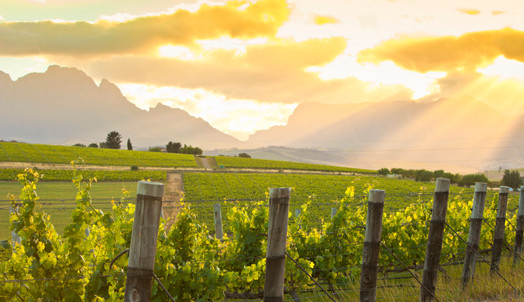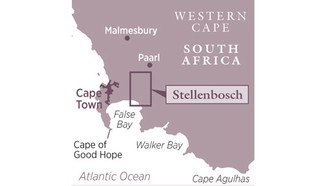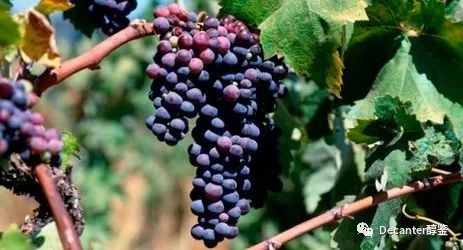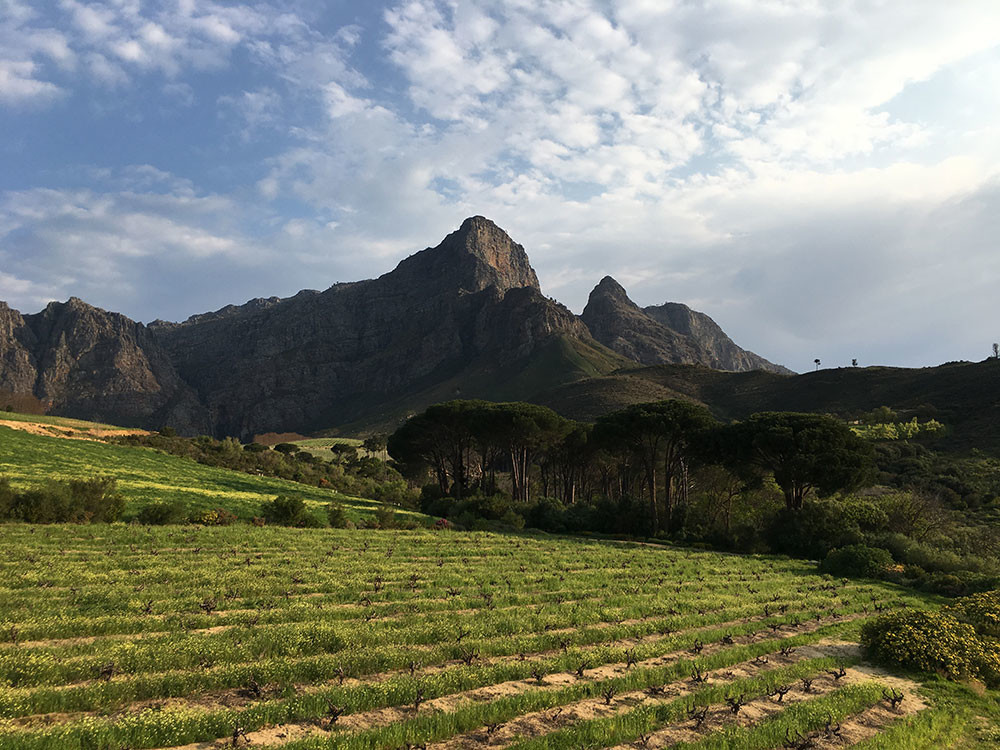Bustling with vineyards, heritage architecture, art and plenty of opportunities for outdoor dining, Decanter gives the low-down on why this region really is a destination for all seasons.

Stellenbosch
Towering mountains linked to a chain of commanding hills; both guard an amphitheatre of undulating, vineyard-covered foothills and valleys, all leading to a vivid green-blue sea. Such is the dramatic beauty of the Stellenbosch winelands, even locals never tire of it, let alone the first-time visitor. But Stellenbosch is about much more than jaw-dropping vistas – it’s a region for all seasons, all wine styles and more besides. It’s a region that can be traversed within an hour, though incurious indeed would be the traveller who would not want to dally and explore all it has to offer. The original settlement on the banks of the Eerste river (First river) was founded by then Governor of the Cape, Simon van der Stel in 1679. Vineyards were planted shortly after that, making Stellenbosch the second-oldest wine region in South Africa after Constantia.
Culture and wine
Nowadays, Stellenbosch is a bustling university town, about an hour’s drive from Cape Town. Besides shops and restaurants aplenty, Cape Dutch national heritage houses (particularly in oaked- lined Dorp Street) are worth leisurely admiration. Those who love the arts are well catered for. Several galleries house contemporary and historic art, and several wine farms have exhibitions, too. If your interest extends to see how it’s done, visits to well-known local sculptor Dylan Lewis’ studio can be arranged. His works may be found in gardens of wine farms such as Delaire Graff.
For music enthusiasts, both classical and jazz concerts are staged throughout the year at Endler Hall. In summer, the outdoor Oude Libertas amphitheatre offers a programme of varying music genres, while in neighbouring township Kayamandi, AmaZink, a pulsating musical and dining experience, is not to be missed.
But wine is the main story here. The vineyards, fanning out from the town, are home to the greatest number of wineries of any area, currently about 160, featuring both large and small operations. The former includes the country’s largest wine and spirits producer, Distell (www.distell.co.za) behind such wine brands as Nederberg, Pongracz, Stellenzicht and Lomond.
Making a choice from this daunting figure is eased by the Stellenbosch wine tourism body’s informative booklet and internet guide (wineroute.co.za), where member wineries have been divided into five sub-routes to make organising cellar door visits simpler. This is all a far cry from 1971, when the Cape’s first wine route was founded in Stellenbosch with just a handful of members.
Winery architecture here is as diverse as the wines – from the whitewashed low walls and traditional gabled manor house at Rustenberg (www.rustenberg.co.za) to the strikingly modern cellar at Tokara (tokara.com). Both wineries produce a typical, quality range of white and red wines, including the area’s signature variety, Cabernet Sauvignon.
Translated by Sylvia Wu / 吴嘉溦
All rights reserved by Future plc. No part of this publication may be reproduced, distributed or transmitted in any form or by any means without the prior written permission of Decanter.
Only Official Media Partners (see About us) of DecanterChina.com may republish part of the content from the site without prior permission under strict Terms & Conditions. Contact china@decanter.com to learn about how to become an Official Media Partner of DecanterChina.com.



Comments
Submit